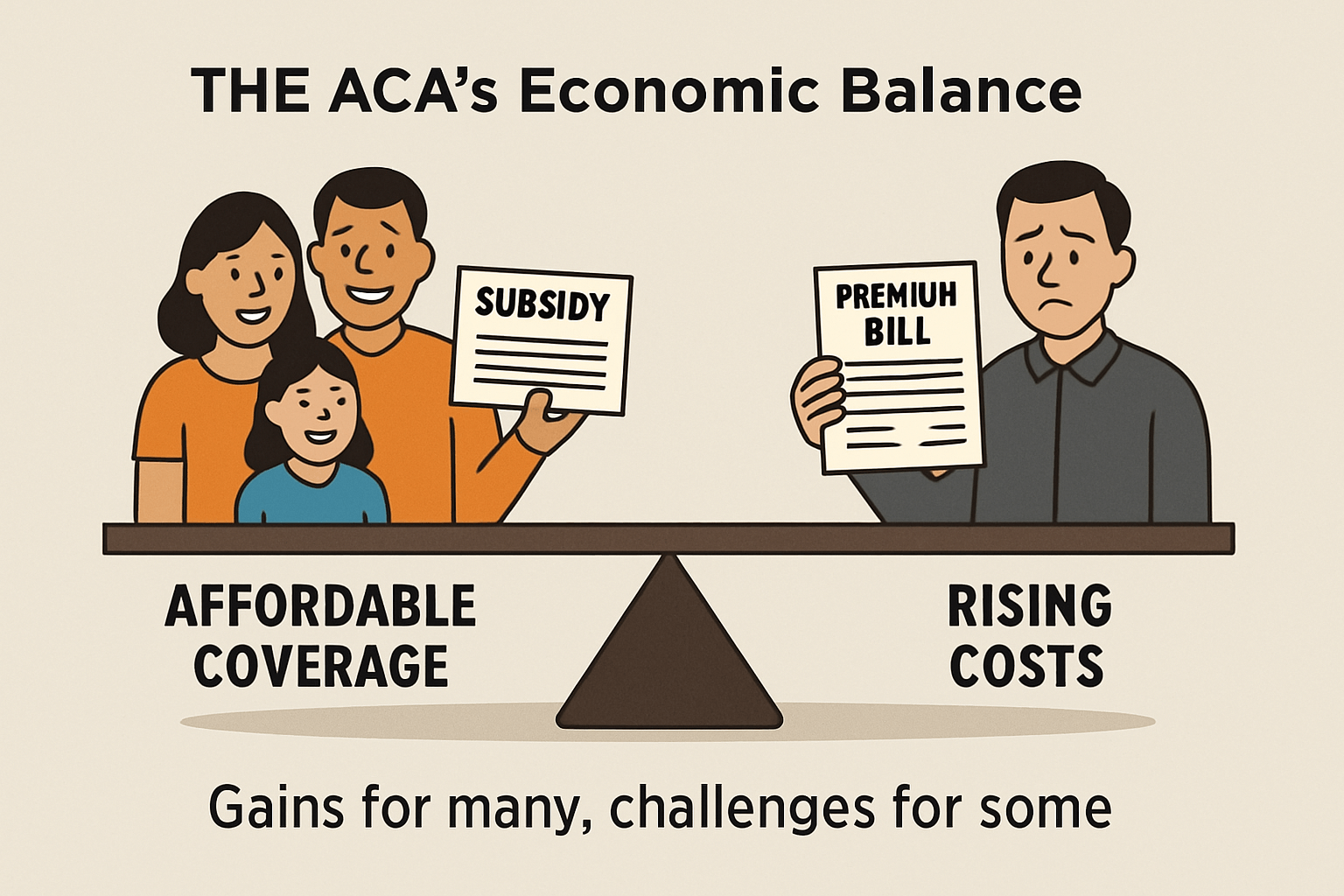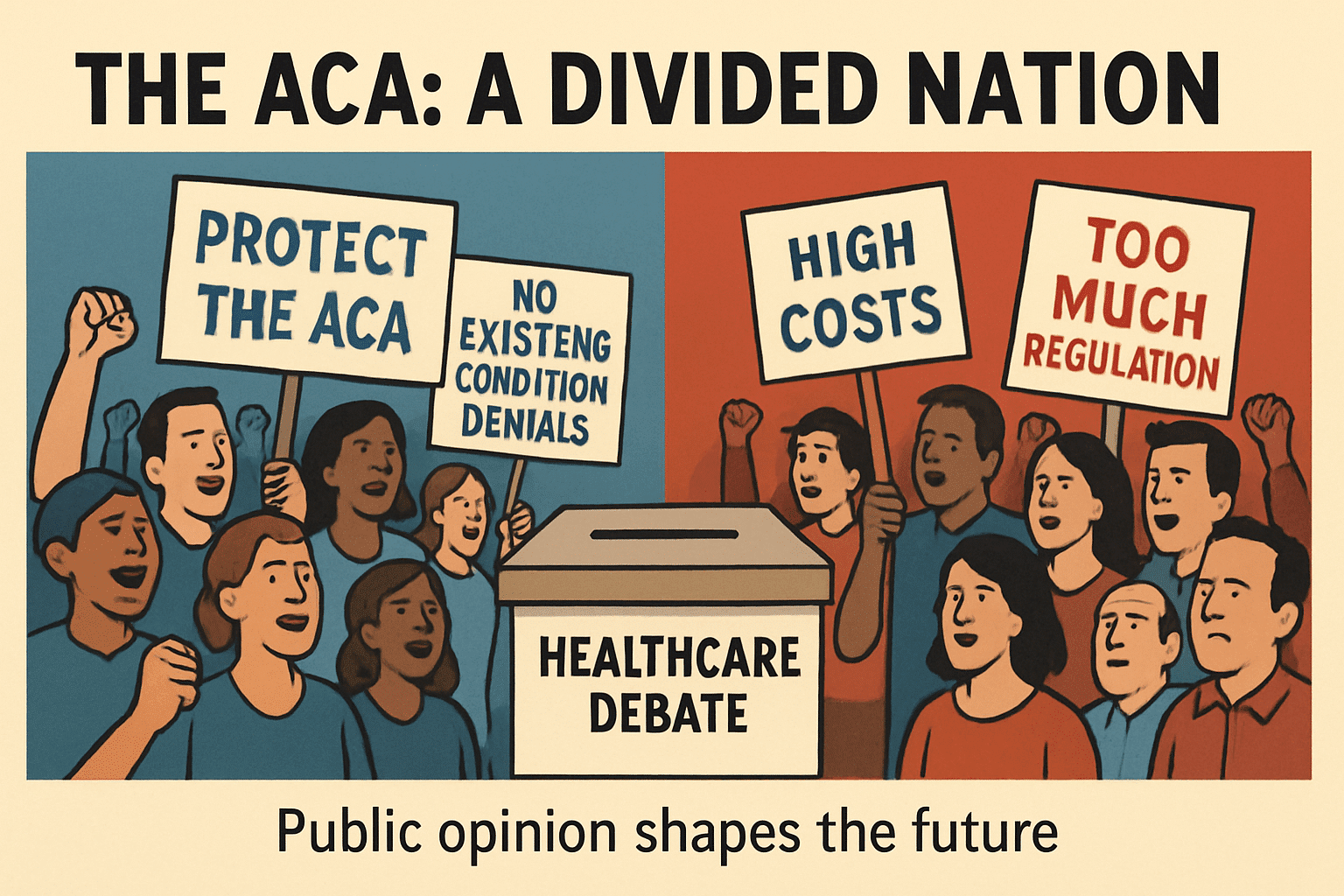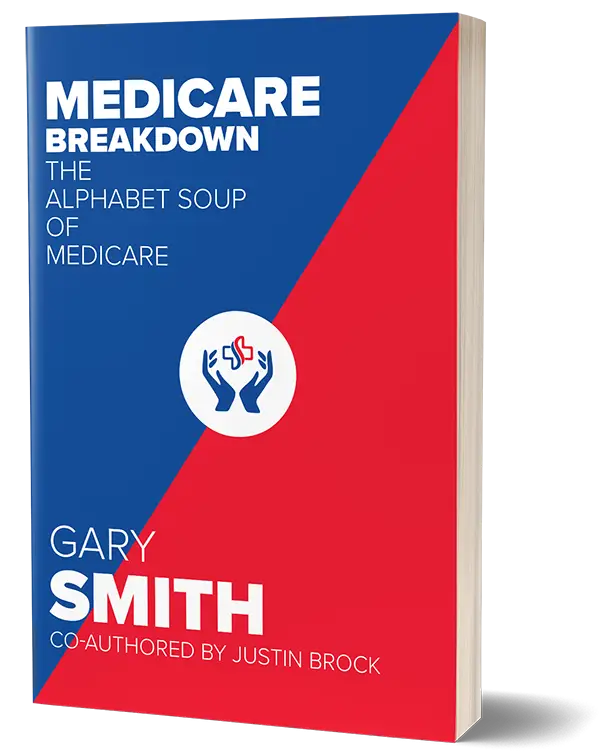Affordable Care Act Your Guide
Get A Free Quote
We put the CARE in Medicare!
Navigating the world of Medicare can feel a bit like standing at the edge of a vast ocean—exciting but daunting. With all the options and costs associated with this vital program, it’s essential to get a grip on what you’ll be paying. Whether you’re approaching retirement or helping a family member, understanding Medicare costs can lead to better financial decisions and a smoother healthcare experience. Let’s break it down together, shall we?
Understanding the Affordable Care Act
Its Impact & Implications for Americans
The Affordable Care Act (ACA), often called "Obamacare," has become a cornerstone of the American healthcare landscape since its inception in 2010. From increasing access to health insurance to fundamentally reshaping how healthcare is delivered in the U.S., the ACA stands as a significant legislative milestone. But what does it all mean for you and your family? Let's unpack this transformative legislation, from its key provisions to its broader implications for our society.
What is the Affordable Care Act?
So, what exactly is the Affordable Care Act? Essentially, it's a comprehensive healthcare reform law aimed at expanding access to insurance, making healthcare more affordable, and improving the quality of care. The ACA sought to bridge the gaps in a fragmented healthcare system that left many Americans without coverage.
In fact, before its enactment, many folks faced astronomical medical bills or were priced out of the insurance market entirely. The ACA introduced several key features designed to combat this crisis. At its core, the law expanded Medicaid eligibility, established state health insurance marketplaces, and mandated that insurers cannot refuse coverage based on pre-existing conditions.
A Historical Context
Think back to a time when health insurance was a luxury rather than a necessity. Prior to the ACA, millions were uninsured; coverage depended heavily on your job or financial means. The ACA changed that narrative, attempting to create a system where health coverage is a right, not a privilege. It’s a shift from a reactive system addressing health problems only after they arise to a preventative approach that focuses on keeping people healthy in the first place.

Key Provisions of the ACA
Health Insurance Marketplaces: The New Shopping Experience
Remember the last time you shopped for a new phone or car? You probably went online, compared options, and picked what best suited your needs. The ACA created a similar landscape for health insurance. It established health insurance marketplaces, state-based platforms where individuals can compare plans and find coverage that fits their needs.
These marketplaces allow people to access subsidies and tax credits—a financial safety net designed to make coverage more affordable. Many individuals have benefited from these subsidies, making healthcare accessible without breaking the bank.
The Lifeline of Medicaid Expansion
For millions of low-income Americans, Medicaid expansion under the ACA was a game-changer. Eligibility criteria were broadened significantly, allowing many who previously fell through the cracks to finally have access to necessary healthcare services. This expansion wasn’t just about insurance; it was about dignity—allowing individuals to address their health needs without facing financial ruin.
Individual Mandate: A Question of Participation
Did you know there used to be a mandate requiring everyone to have health insurance? This was the ACA's individual mandate, which aimed to keep health insurance markets stable by ensuring enough healthy individuals participated. While this part of the law was repealed in 2019, it sparked ongoing discussions about personal responsibility and community health.
Consumer Protections: Keeping You Safe
Perhaps one of the most critical components of the ACA is its consumer protections. Insurance companies can no longer deny coverage or charge higher premiums based on pre-existing conditions. Imagine having a chronic illness and facing the daunting prospect of being uninsurable—that’s what many Americans dealt with before these protections were established. Now, everyone has the right to necessary care, regardless of their health history.
Impact of the ACA

Increased Access to Healthcare: A Major Win
Did it work? Absolutely. Since the ACA took effect, the uninsured rate has plummeted. To put it in numbers, the rate for uninsured adults dropped from 17.8% in 2010 to about 9.6% in recent years. That's millions of people who have gained coverage and, by extension, a sense of security when it comes to their health.
This access isn’t just about numbers, though; it translates into actual people receiving preventive care, routine check-ups, and necessary treatments. Imagine how many lives have been saved or improved simply by increasing access to these services.
Economic Implications: The Cost of Coverage
While the ACA has undoubtedly increased access, it’s also essential to look at its economic implications. Many families found themselves facing rising premiums, especially those who didn’t qualify for subsidies. The law made insurance affordable for many, but it also placed additional burdens on others. This contradiction is a critical aspect of the ACA’s legacy—how to balance the scales of affordability across different income brackets.
Effects on Health Outcomes: The Data Speaks
Better access usually results in better outcomes, right? Studies show marked improvements in public health metrics since the ACA. For instance, many community health programs have thrived, leading to improved management of chronic conditions like diabetes and hypertension. This isn’t just about avoiding catastrophic health events—it’s about improving daily lives.
Challenges and Criticisms: The Other Side of the Coin
However, it’s not all sunshine and rainbows. The ACA faced its fair share of criticism and challenges. Some argue it didn’t go far enough in addressing systemic problems, such as the rising costs of medications and hospital care. Additionally, certain states have resisted expanding Medicaid, leaving millions still without coverage. It raises important questions: How do we ensure that everyone, regardless of where they live, has access to healthcare?
Public Perception and Political Landscape
What do people really think of the ACA? Public opinion has fluctuated over the years, with some continuously supporting it while others oppose it vehemently. It’s common to find strong divides along political lines—Republicans often criticize the ACA's costs and regulations, while Democrats tout its successes and necessity.
Surveys indicate that people appreciate protections against denial of coverage but express concerns over rising premiums. So, what’s the takeaway? The ACA remains a polarizing topic that continues to drive conversations about healthcare in the U.S.
Political Challenges: The Rollercoaster Ride
The ACA hasn’t just shaped healthcare; it’s also shaped politics. Over the years, attempts to repeal or modify it have created significant political battles. The law has become both a lightning rod and a rallying point for various political movements. It’s clear that healthcare policy is not just about regulations—it’s deeply intertwined with our national identity and values.
Bipartisan Efforts: Finding Common Ground
Despite the fierce debates, there have been moments of bipartisan effort to improve the ACA. Recognizing that reform is a necessity rather than a luxury, key players from both parties have occasionally come together to address shortcomings. This coalition-building shows a glimpse of hope amidst the contentious landscape of healthcare reform.

Future of the Affordable Care Act
Current Legislative Landscape: What’s Next?
So, where do we go from here? The legislative landscape remains uncertain. With discussions about potentially improving rather than dismantling the ACA gaining traction, it’s essential to keep an eye on Congress and upcoming elections. Will we see an expansion of existing programs, or will the focus shift toward reducing the regulation?
Innovations in Healthcare Coverage: Looking Ahead
Exciting developments are underway. Innovations in telehealth, digital health records, and AI in healthcare are changing the way services are delivered. The ACA’s framework could adapt to these advancements, potentially creating a more streamlined experience for users. You might ask yourself: How can technology make my healthcare experience smoother and more accessible?
Ongoing Awareness and Advocacy: Your Role Matters
Change doesn’t happen in a vacuum. Advocacy and awareness are crucial in shaping the future of the ACA and healthcare overall. Staying informed and voicing your opinions can lead to real policy changes. Whether you’re engaged through advocacy groups, social media, or direct communication with your representatives, every action counts.
The Ongoing Journey
The Affordable Care Act has certainly made its mark on American healthcare. It has played a vital role in expanding access, improving health outcomes, and driving crucial conversations about the future of care in this country. But the journey doesn't end here. As we move forward, ongoing dialogue and advocacy are essential in shaping a system that works for everyone, no matter their background or situation.
So, what role will you play in this evolving landscape? As we continue to navigate the complexities of healthcare policy, it’s clear that our collective voice matters. Stay informed, get involved, and let’s ensure a healthier future for all.
The ACA is more than just legislation; it's a reflection of what we value as a society—a commitment to care, compassion, and community. And that’s something worth fighting for.
Affordable Care Act Eligibility
Its Impact & Implications for Americans
Understanding Affordable Care Act Eligibility: Who Can Get Coverage?
Getting health insurance can feel a bit like navigating a maze, right? With all the rules and regulations, it's easy to get lost. That's where the Affordable Care Act (ACA) comes in. This landmark legislation was designed to ensure that more Americans have access to affordable health insurance. But, who exactly is eligible for that coverage? Let’s unravel the details and find out what you need to know.
What’s the Affordable Care Act All About?
The Affordable Care Act, enacted in 2010, revolutionized the way health insurance works in the United States. Its main goals? To expand access to healthcare, lower costs, and improve health outcomes for everyone. Think of it as a safety net that catches those who would otherwise fall through the cracks of the healthcare system.
So, why is understanding eligibility crucial? Because not everyone can waltz into a healthcare plan without knowing the rules of the game. Eligibility criteria determine who qualifies for various plans, premium subsidies, and Medicaid expansion. Let’s break it down so it’s crystal clear.
The Basics of Eligibility: Who’s In?
Now, let’s get into the nitty-gritty. To qualify for ACA coverage, there are several key criteria you need to meet. These include:
- Citizenship & Immigration Status
- First things first—you need to be a U.S. citizen or a lawfully present immigrant. If you’re not a citizen, you can still be eligible, but it depends on your immigration status. Some folks, like undocumented immigrants, are not eligible for coverage through the ACA.
- Residency Requirements
- You’ve got to call the United States home (at least for part of the year). Generally speaking, to enroll in ACA coverage, you need to reside in the state where you plan to get your health insurance. Each state runs its own marketplace, and while they all follow ACA guidelines, there might be local quirks.
- Income Guidelines
- Money talks—or rather, it determines whether you can access financial assistance. The ACA uses the Federal Poverty Level (FPL) as a benchmark. If your household income falls between 100% and 400% of the FPL, you may qualify for premium subsidies to lower your monthly health insurance costs. If you’re below 138% of the FPL, you may be eligible for Medicaid in states that expanded the program.
Who Falls Under Specific Eligibility Groups?
Okay, now let’s take a closer look at the specific groups that might benefit from the ACA.
- Individuals & Families
- Whether you’re a single individual or part of a big family, there are plans tailored for you. The ACA has different categories for coverage based on family size and age. For instance, a family of four might have different eligibility criteria compared to a single adult.
- Low-Income Individuals
- If your income hovers below the poverty line—well, that's significant. Under the ACA, states that expanded Medicaid have opened doors for individuals and families whose incomes are below 138% of the FPL, providing them with crucial health services without the burden of exorbitant costs.
- Young Adults
- Here’s a perk: young adults under the age of 26 can stay on their parents’ health insurance plan. This provision helps a lot of recent graduates or those just starting to navigate adulthood. It’s like a safety net right as you’re getting your footing.
- People with Pre-Existing Conditions
- Got a health issue? No worries. The ACA ensures that people with pre-existing conditions can’t be denied coverage or charged more for plans. This is a game changer for millions who worried about their existing health issues making insurance out of reach.
Enrollment Periods: When Can You Get In?
Knowing when you can enroll is just as important as knowing if you can. The ACA has outlined specific time windows for enrollment.
- Open Enrollment Period
- Typically, there’s an annual open enrollment period where anyone can sign up for health insurance. This period usually runs from early November to mid-December. It’s crucial to mark your calendar because if you miss it, you may have to wait a whole year to enroll unless you have a qualifying life event.
- Special Enrollment Periods
- Life happens, right? If you experience a qualifying life event—like getting married, having a baby, or losing other health coverage—you qualify for a special enrollment period. This typically lasts 60 days, so jumping on it quickly is key.
- Responsibility to Enroll
-
- Don’t forget: having health insurance isn't just a good idea—it’s required under the ACA. If you don’t enroll and you don’t qualify for an exemption, you might face penalties. Think of it as a friendly nudge from the government to keep you covered.
-
What Happens If You Don't Qualify?
So, what if you're just not eligible? Unfortunately, that can have consequences. If you don't meet the eligibility requirements for ACA coverage, you might miss out on affordable healthcare options, leaving you to rely on potentially more expensive plans or go without insurance entirely.
While there used to be tax penalties for not having coverage, those have largely been rolled back at the federal level. However, some states still impose penalties for the uninsured, so it pays to check local laws. Lack of coverage can also lead to financial strain—medical bills can pile up faster than you think.
Finding Help and Resources: Because You Deserve It!
Navigating the ACA and understanding your eligibility can be daunting, but lucky for you, there are plenty of resources available.
- HealthCare.gov
- This is your go-to spot for everything ACA-related. You can enter your zip code to find out what plans are available in your state and what you might qualify for.
- State-Based Exchanges
- Some states operate their own health insurance marketplaces. It’s worth checking out if your state has one, as they may offer different options or assistance.
- Consulting with Navigators
- Don’t go it alone! Numerous non-profit organizations offer free assistance to help you understand your options. Navigators are trained professionals who can help answer your questions and guide you through the enrollment process.
- Eligibility Calculators
- Use online tools to get a clearer picture of where you stand. Many sites feature calculators that estimate your eligibility based on income and household size.
Wrapping It Up: Your Path to Coverage
Understanding eligibility for the Affordable Care Act is the first step to getting the healthcare coverage you and your family deserve. Whether you're a young adult starting your journey, a low-income individual seeking affordable options, or someone with specific health needs, the ACA has provisions in place to help you.
Make sure you mark key dates on your calendar, check your eligibility, and leverage the resources available to you. The world of healthcare can be overwhelming, but you don’t have to navigate it alone.
In the end, everyone deserves access to affordable healthcare—so don’t let eligibility keep you from finding coverage that fits your needs. Take it step by step, and you’ll find the right path.
Your Essential Guide to Navigating Affordable Care Act Enrollment
Navigating health insurance can feel like trying to find your way through a maze without a map. But don’t worry! Here’s your go-to guide for enrolling in the Affordable Care Act (ACA). Whether you're a newbie or just need a refresher, we’ve got your back.
What on Earth is the Affordable Care Act?
The Affordable Care Act, often simply called the ACA, is a game-changer in the world of healthcare. It was designed to improve access to health insurance for Americans while also aiming to lower healthcare costs overall. Sounds pretty great, right? It brought several key components to life, like health insurance marketplaces, which allow individuals to compare and purchase insurance plans. Plus, it expanded Medicaid for those who need it most, and created essential consumer protections to help keep folks safe from discrimination in health insurance coverage.
In short, the ACA’s goal is to make sure everyone gets the healthcare they deserved, without breaking the bank. Awesome, huh?
Timing is Everything
Enrollment Periods
Here's the scoop: timing your enrollment is critical. The ACA uses specific enrollment periods to regulate when folks can sign up for health insurance.
Open Enrollment Period (OEP)
This is your main chance to enroll. Typically, it runs from November 1 to December 15 every year. During this window, anyone can sign up for a new plan or switch their coverage without needing a special reason. So mark those dates on your calendar!
Special Enrollment Period (SEP)
—you might qualify for a Special Enrollment Period. This could allow you to enroll outside the usual OEP dates, usually lasting for 60 days after that event. Just keep in mind, you’ll need to provide proof of your qualifying event.
Are You Eligible?
Understanding Requirements
You might be wondering whether you can actually enroll. The good news is that the eligibility criteria are designed to be inclusive. Here’s what you need to know:
- Citizenship: Generally, U.S. citizens and legal residents are eligible.
- Income: Your household income matters. The ACA works on a sliding scale based on the Federal Poverty Level. If your income falls within specified ranges, you could qualify for help.
- Special Circumstances: Factors like homeless status, recently leaving incarceration, or other life changes can also potentially qualify you.
Checking your eligibility is crucial, so make sure you review the requirements carefully.
Common Challenges: What to Expect
No process is without its bumps in the road. Here are some common challenges people face during enrollment:
- Technical Issues: Website crashes can be frustrating. If this happens, take a breather and try again later.
- Confusion About Eligibility: If you're unsure whether you qualify, don’t hesitate to reach out for help. It’s better to ask and get the right information.
- Missed Deadlines: It’s easy to lose track of time. Set reminders on your phone so you don’t slip past the important dates!
Frequently Asked Questions
Here are some common questions that arise during enrollment:
Need Help? Resources at Your Fingertips
Navigating health insurance can be tricky, but you’re not alone. There are a ton of resources to help:
- HealthCare.gov: This should be your go-to for all things ACA and enrollment details.
- Local Navigators: These are individuals who are trained to help you through the process. Find one near you!
- Community Organizations: Many organizations offer workshops and one-on-one assistance to guide you through the ins and outs of enrollment.
Seeking help can make a world of difference, especially if you run into complications.
Wrapping it up
Understanding and enrolling in the Affordable Care Act might seem daunting, but with the right information, it can be a breeze! You are not just signing up for health insurance; you’re taking a significant step toward securing your health and financial future.
So, mark those calendars, gather your documents, and get ready to make informed choices that benefit your health and wallet. Remember, you’ve got this, and every step you take is a step toward better healthcare. If you have any questions or need support, don’t hesitate to reach out. Your health is worth it!



